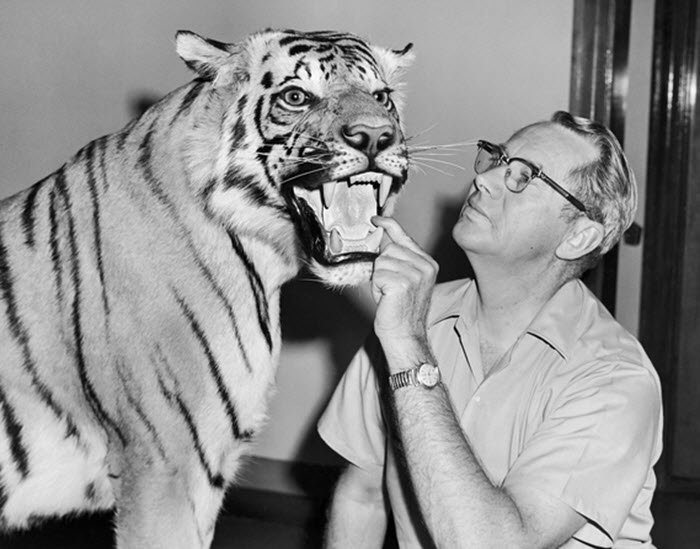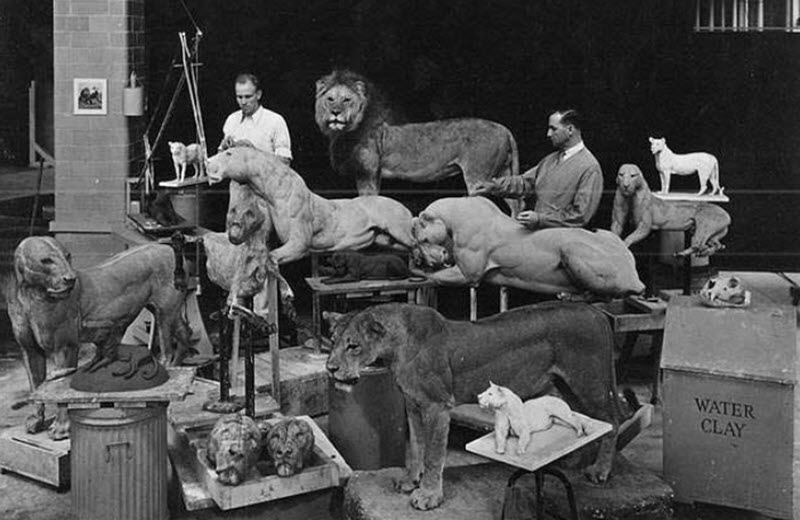Contents

Introduction
The preservation of animal skin goes back into prehistoric times, since our early ancestors used animal skins for a variety of purposes.
Some of the oldest known embalmed animals are those encountered alongside human mummies in Ancient Egyptian thombs, but embalming is not considered the same thing as taxidermy, even though the fields share several important caracteristics.
According to some sources, preserved gorilla skins were kept in the temple of Astarte in Carthage in northern Africa until the year 146 B.C. when the ancient city was destroyed by the Roman Republic in the Third Punic War.
The New World also have many notable examples of taxidermy and taxidermy-related works, where parts of animals are preserved for utilitarian or other purposes. Native American peoples such as the Sioux, Cheyenne and Cherokee do for instance have a long tradition of preserving skins from various mammals.
Early modern taxidermy in Europe
The Renaissance, Age of Enlightment and Scientific Revolution led to many groundbreaking changes in Europe and it also impacted taxidermy. What we call modern taxidermy began to take form. One early example is the stuffed rhinoceros in Florence, housed in the Royal Museum of Vertebrates. This rhinoceros mount is believed to date back to circa 1500 AD. In St. Gall in Switzerland, it is still possible to visit a stuffed Egyptian crocodile that has been on display since 1627.
During the 1700s, keeping stuffed exotic animals on display became trendy among the upper crust of European society – including the royals. Eventually, this habbit trickled down to the growing middle class as well. During the Victorian era, taxidermy mounts were extremely popular as home decorations among the European bourgeoisie.
The stuffed birds from the East Indies
One of the earliest known examples of stuffed birds is from the Netherlands. Roughly 400 years ago, a Dutch trader imported an aviary of exotic birds from the East Indies, but the bird keeper didn’t care for the properly and they all died of suffocation. The trader then decided to have their skin and plumage preserved for display. To keep them from rotting, spices (also imported from the East Indies) were used. The exterior of the birds were wired and stuffed with cotton and tow, and posed in natural positions.
Early writings about taxidermey
One of the oldest known scientific writings about modern taxidermy is found in Natural History, a work published by the Royal Academy of Vienna in the early 1700s. The work includes a treatise on how to disect birds and certain other animals, and also references the preservation of birds in the Netherlands more than a century previously.
There is also Treatise, written by the French entomologist René Antoine Ferchault de Réaumur and published in 1749. In this work, the entomologist discuss the preservation of birds, suggesting that they should be mounted with wires. Contemporary taxidermists wasn’t overly impressed, since mounting with wires was nothing new. The publication of Treatise did however spur the development of a new method where the skin is cut into halves (longitudinally), filled with plaster and fixed to a backboard. An artificial eye is inserted, and both beak and legs are painted on, before the bird is mounted in a glass framework. This new method came to dominate European taxidery for several decades.

The Great Exhibition of 1851
The Great Exhibition of 1851, located in Lond’ns Hyde Park, helped propell mainstream interest in taxidermy, partly thanks to the wonderful bird specimens displayed by English ornotholigist John Hancock. Taxidermists from many different countried attended the Great Exhibition and got a chance to learn from each other and exchange skills, ideas and ideals.
The Rowland Ward studio
Located in London, the Rowland Ward studio had a huge influece on British taxidermy from the late 19th century, as several improvements were trailblazed here. One famous example of a mount from this studio is The Lion and Tiger Struggle, exhibited first in Paris and then in London.
Jules Verieaux
The French taxidermist Jules Verieaux is the man behind the famous display The Courier, which depicts two lions attacking a camel upon which an Arab man is seated. (The man is not a taxidermy specimen.) The mount premieered at the 1867 Paris Fair, and was later brought to the American Museum of Natural History. The Courier is a great example of how taxidermists of this era had begun to pay really close attention to anatomical movements and features when creating their mounts and displays.
